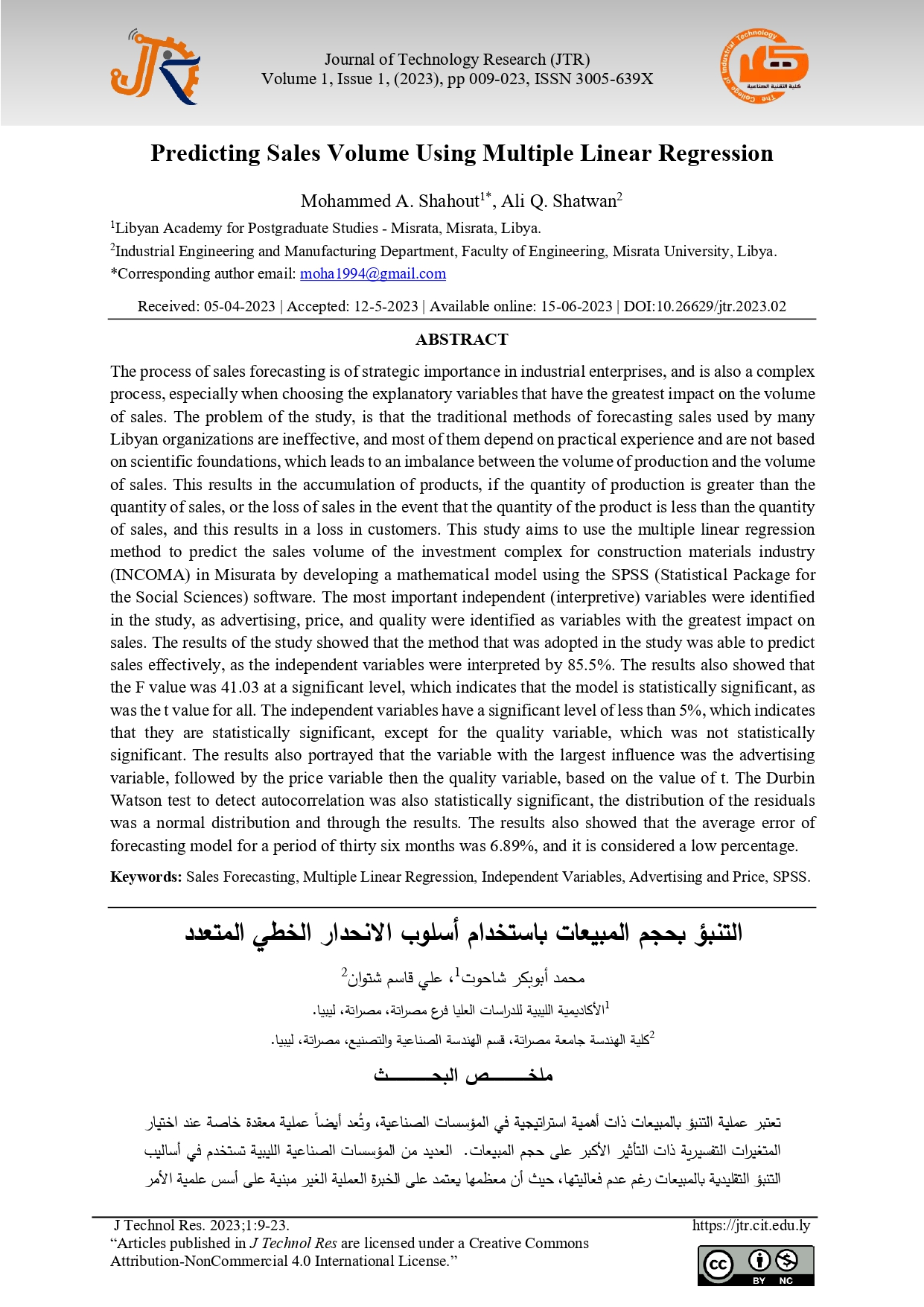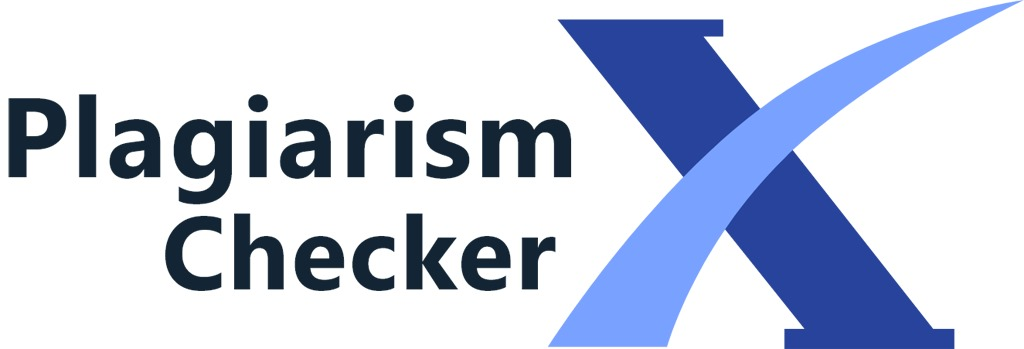Predicting Sales Volume Using Multiple Linear Regression
DOI:
https://doi.org/10.26629/jtr.2023.02Keywords:
SPSS, Advertising and Price, Independent Variables, Multiple Linear Regression, Sales ForecastingAbstract
The process of sales forecasting is of strategic importance in industrial enterprises, and is also a complex process, especially when choosing the explanatory variables that have the greatest impact on the volume of sales. The problem of the study, is that the traditional methods of forecasting sales used by many Libyan organizations are ineffective, and most of them depend on practical experience and are not based on scientific foundations, which leads to an imbalance between the volume of production and the volume of sales. This results in the accumulation of products, if the quantity of production is greater than the quantity of sales, or the loss of sales in the event that the quantity of the product is less than the quantity of sales, and this results in a loss in customers. This study aims to use the multiple linear regression method to predict the sales volume of the investment complex for construction materials industry (INCOMA) in Misurata by developing a mathematical model using the SPSS (Statistical Package for the Social Sciences) software. The most important independent (interpretive) variables were identified in the study, as advertising, price, and quality were identified as variables with the greatest impact on sales. The results of the study showed that the method that was adopted in the study was able to predict sales effectively, as the independent variables were interpreted by 85.5%. The results also showed that the F value was 41.03 at a significant level, which indicates that the model is statistically significant, as was the t value for all. The independent variables have a significant level of less than 5%, which indicates that they are statistically significant, except for the quality variable, which was not statistically significant. The results also portrayed that the variable with the largest influence was the advertising variable, followed by the price variable then the quality variable, based on the value of t. The Durbin Watson test to detect autocorrelation was also statistically significant, the distribution of the residuals was a normal distribution and through the results. The results also showed that the average error of forecasting model for a period of thirty six months was 6.89%, and it is considered a low percentage
Downloads

Downloads
Published
Issue
Section
License

This work is licensed under a Creative Commons Attribution-NonCommercial 4.0 International License.














